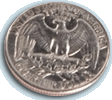Better Service for Less Money at FAA
Situation Before: The 44,865 men and women of the FAA help deliver the world’s safest form of transportation on a 24 hours a day 7 days a week 365 days per year. This involves 50,000 flights per day and 700 million passengers per year. But the Government Accountability Office classified it as one of the agencies most susceptible to waste, fraud, and abuse when it featured FAA financial management and air traffic control modernization on its biennial high-risk list. Some of the problems GAO cited:
- FAA’s modernization effort, expected at the time to cost a total of $45 billion through fiscal year 2005, experienced cost overruns, schedule delays, and performance shortfalls of large proportions.
- FAA lacked an adequate system to account for its property, plant, and equipment on an ongoing basis, it had to use alternative procedures and labor-intensive methods to establish a baseline and costs, reported to be $10.8 billion at the end of fiscal year 1999.
- FAA also lacked a cost accounting system or an alternative means to meaningfully accumulate and report its costs.
Actions Taken: To address these challenges, FAA:
- Implemented new general, property, and cost accounting systems , a department-wide initiative that give FAA the ability to produce reliable financial statements that accurately assign costs to its programs and projects and account for the cost of its property.
- Implemented a framework for improving its software processes, developed a systems architecture, institutionalized cost estimating practices, improved its investment management practices to better track project timelines and cost
- Initiated the consolidation of facilities and services as well as strategic sourcing of key purchases.
FAA’s most ambitious improvement initiative involved the largest public-private competition ever initiated in the 50-year history of the federal government’s competitive sourcing program. Using the competitive process, FAA analyzed its Automated Flight Service Station (AFSS) System, and compared the government’s in-house proposal, in the form of a most efficient organization (MEO), to four proposals from the private sector. Studies by the FAA and the Department of Transportation’s Inspector General identified significant deficiencies with the AFSS system, including use of outmoded technologies and deteriorating facilities. The winning proposal, from Lockheed Martin, will introduce new and modified equipment and better facilities to improve the AFSS services, including pilot weather briefings, in-flight radio communications, flight planning, and search-and-rescue support.
Results: In FY 2006, FAA transitioned the operation of Flight Service Stations to Lockheed Martin saving over $2.2 billion over the life of the program. In addition, we have improved our oversight on major programs and now have 97% of our critical acquisitions on schedule and 100% on budget. The FAA has also been taken off the GAO high risk list for financial management. |

 Federal employees are more effective, making a bigger difference, as the following examples indicate.
Federal employees are more effective, making a bigger difference, as the following examples indicate.